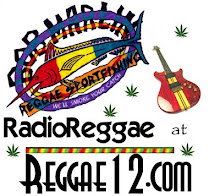A GNA Feature By Cephas Amevor (AIJC Intern)Accra, Sept 27, GNA- "All the days of his vow, no razor shall come upon his head; until the time is completed for which he separates himself to the Lord, he shall be holy, he shall let the locks of his hair grow long."- Numbers 6:5.
The above quotation in the Bible backs the idea for any person to put on dreadlocks, provided he or she wants to become a Nazarene. That person could also be called a Rastafarian.
Starting in Jamaica in the 1930s by Joseph Hibbert, Archibald Dunkley, Ferdinand Rickets, Vernal Davis and Leonard Hewell Rastafarianism and its movement spread to the United Kingdom, Canada and the United States and to other Caribbean islands.
In Ghana Rastafarians are found in all the 10 regions. And in the media, mention Ras Black Santino of Vibe FM; Ras Culture B (Korku Adinkra Apetu) of Joy FM and, Daddy Bosco of Adom FM. When it began, the Rastafarian Movement was named after Tafari Makonnen, which was the original name of Haile Selassie I, a prince who in 1930 was crowned Emperor of Ethiopia. Ras means "Lord" in the Amharic language.
The long, matted locks known as dreadlocks easily identify Rastafarians. Many Rastafarians also wear beads around their necks, hand and legs signifying their love for local made artefacts. They also carry along badges of Haile Selassie, Marcus Garvey, a Pan-Africanist and sometimes Osagyefo Dr Kwame Nkrumah, First President of the Republic of Ghana.
In Ghana, a number of tour guides are Rastafarians. They sometimes wear knitted caps of red, gold, green, and black -the colours of the Ethiopian flag, which have symbolic significance for members of the movement.
They also observe Hebrew dietary laws, abstaining from certain items in their diet, and eating only those foods considered pure. Sometimes, Rastafarians tend to have a rather low public image. They are seen as mentally derailed and often denied jobs as a result of wearing dreads.
But if the Constitution and the electoral laws accept Rastafarians votes, taxes and other roles in national development, why are they discriminated against when it comes to giving jobs and positions for which they are qualified?
There is no need to neglect and scorn Rastafarians. Speaking to the GNA Aswad Nkrabia, Organizer of Rastarafari Unity Home and Abroad (RUHA), an NGO championing the Rasatafarian cause, advised Rastafarians, who have rather made roaming their daily schedule, to leave the streets and use their God given hands to do something profitably for themselves and the nation.
He said being a Rastafarian was entering into a covenant with God, hence one needed to be neat. Jesus Christ is believed to be a Rastafarian because he observed all the vows that were now known as Rastafarian vows.
The central doctrine of Rastafarianism, also known as Rasta, is that Haile Selassie is the Christ of the black race. This belief continued to be held even after his death in 1975.
The Ras Tafari movement is thought to be a strand of the "Back to Africa" movement created by Jamaican leader Marcus Garvey after he moved to the United States and settled in New York City in 1916.
Garvey preached black pride and black emancipation, and advocated a return of black Americans to Africa, their ancestral homeland, and particularly to Liberia, Sierra Leone and Ghana.
According to a widely believed report, Garvey told his followers in Jamaica, at his departure for the United States, "Look to Africa where a Black King shall be crowned; he shall be your redeemer.
"After the coronation of Haile Selassie, many Garvey followers began to search the Bible for confirmation of the prophecy. The confirmation was found in Revelation 19:16, which reads: "And he hath on his vesture and on his thigh a name written, King of Kings, and Lord of Lords." With these events the Rastafarian movement was born.
Rastafarianism is a millenarian movement emphasizing the belief that, through the power of a supernatural being, oppressed people would miraculously be led from oppression to a new heaven on Earth where all problems would be solved in peace.
To believers, Haile Selassie I is the reincarnated Jesus Christ with supreme powers; through him they looked for an immediate return to Ethiopia - the promised land- and the biblical name for Africa. Rastafarians have developed an elaborate ritual system using marijuana (ganja) as a sacrament, as Christians use bread and wine. They have adopted the law of the biblical Nazarites, which prohibits the cutting of their hair.
The conversion of reggae singer Bob Marley to Rastafarianism in 1967 helped to propagate the Rastafarian message and become widespread during the 1970s and early 1980s as Marley and reggae achieved mainstream popularity.
After Marley's death in 1981 other reggae musicians, inspired by the Rastafarian message, also communicated it through their music. Because of its revolutionary stance the Rastafarian movement has been controversial since its emergence. It is unequivocally a black-consciousness movement.
The creed itself is generally peaceful, and Rasta has become increasingly accepted by mainstream organizations as a legitimate religious movement. However, Rastafarians say it is a movement that teaches moral uprightness, humanity and love for one another worldwide. The ritual use of marijuana has contributed to some unfavourable perceptions of the movement, especially in countries where the use of marijuana is illegal.
Marijuana, some scientist s say, has negative implications on the human body. However, Rastafarians debunk the claim saying it is a good herbal medicine, which was created by God. Some scientists say it could reduce high blood pressure and the tendency of becoming asthmatic.



